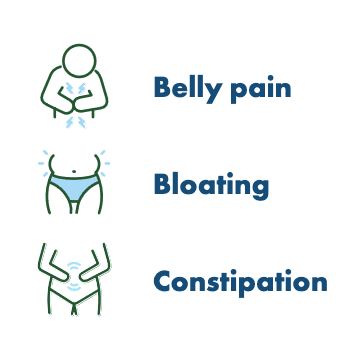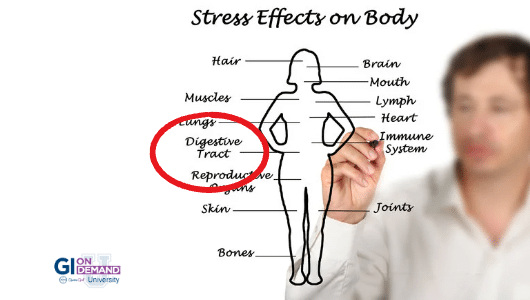Best and Worst Exercises for IBS
“No pain, no gain”, right? Not when it comes to exercise and irritable bowel syndrome (IBS). Daily movement is an important part of your IBS management plan, but not all types of exercise are going to be helpful. So before you go full force on a new workout regimen, take a look at the list below and choose your movements wisely.

Best Exercises for IBS
Yoga
Yoga is an excellent way to add movement into your daily routine without triggering your IBS. Research suggests that yoga may even help improve IBS symptoms and quality of life. When you do yoga, you’re encouraged to focus on your breath and become more present in your own body. This practice can help strengthen your ability to practice mindfulness, which is an important part of IBS symptom management.
Certain yoga poses are more beneficial than others, so starting with a gentle yoga flow is best. If you are taking a yoga class, be as open as you can with your instructor and speak up if you feel that any pose causes you discomfort. If yoga classes aren’t your thing, there are plenty of free and paid yoga videos available online.
Walking
Many people forget that walking is actually considered exercise. Remember, you don’t need to be lying on the floor and out of breath by the end of your workout for it to “count”. Walking fast enough to get your rate up without triggering your IBS is a good goal.
But how do you fit walking into a busy routine?
You can try walking during your lunch break at work, taking a post-dinner walk outside during the warmer months, or even walking on a treadmill if the weather is bad. Adding some weekend hikes into your life is also a fun and stress-relieving way to get your steps in!
Biking
If walking doesn’t excite you, why not give biking a try? When you ride a bike, your legs are doing most of the movement. Many people with IBS report that biking does not trigger their symptoms as much as running. But, the intensity that you can tolerate will vary. Starting out on a flat path at a gentle pace is a great way to ease into biking.
Swimming
Swimming is an often-overlooking exercise that is fantastic for your health. It’s low impact so your muscles and joints will love you, and so will your digestive system! Swimming in an indoor, heated pool can actually be very soothing for your IBS.
Strength Training
While many people associate strength training with grunting, groaning, and straining, it can actually be an excellent choice for those with IBS. A well-planned exercise program will start you off with weights that you can lift comfortably and will allow you to add more weight as tolerated over time.
Worst Exercises for IBS
The following workouts may trigger your IBS symptoms. While we are not suggesting that you give up these activities completely, you may need to scale them down while you are working on getting control of your IBS.
CrossFit
CrossFit has gained popularity because of its community atmosphere and hardcore reputation. For someone with IBS, the intensity of a CrossFit workout may trigger your symptoms. A good CrossFit gym (often called a “CrossFIt box”) should have knowledgeable instructors who can help you scale down the workouts to fit your needs. If you’re having an active IBS flare, jumping into a CrossFit workout is probably not a good idea.
Running
Running can be considered a “pounding” exercise that can cause abdominal cramping and diarrhea. If you are new to running, it’s very important to start slow and mix in walking as you increase the intensity. Once your IBS is well-managed, you will likely be able to tolerate running much better.
HIIT Workouts
HIIT workouts, or high-intensity interval training workouts, involve periods of maximum effort that can cause digestive stress in many people, even those with seemingly iron stomachs. Now imagine how HIIT can affect those with IBS!
Like with CrossFit and running, it’s important to start slow and see how you tolerate the intensity instead of going full speed ahead into a hardcore bootcamp or HIIT class.
If you are actively working with your healthcare team on managing your IBS, it’s important to know your limits when it comes to exercise. Staying active is a great way to help control your IBS, but certain movements may trigger your symptoms. This doesn’t mean that you need to avoid high-intensity exercises for the rest of your IBS, but you should focus on movements that make you feel your best.
Katelyn Collins, RD is a registered dietitian specializing in irritable bowel syndrome (IBS) and digestive health. Katelyn’s personal experience with IBS first sparked her passion for nutrition and health. Since then, she has been a vocal advocate for the digestive health community and has dedicated her own nutrition practice to serving those with digestive conditions.
Listen to our
latest Podcast!






